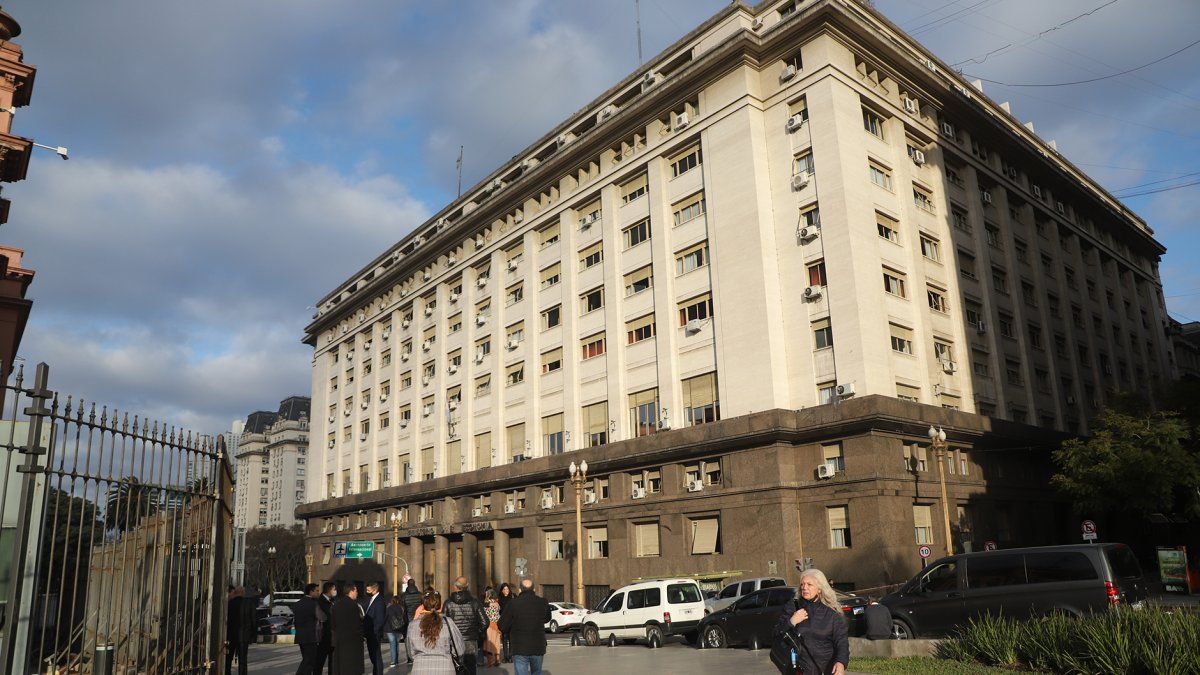He The Government will launch this Thursday a new debt swap in pesos with the idea of clearing maturities for close to $10 trillion that occur between this month and September. Most of the titles that expire are in the hands of State agencies, so that both among private investors and among the men of the team of the Secretary of Finance, Eduardo Setti, hope there will be a good answer from the holders.
Among the officials of the Ministry of Economy is expected to have a participation of approximately 65%, taking into account that the operation does not include short-term titles that serve the investor profile of the Common Funds (FCI). It is estimated that after this operation there would be maturities of $2 trillion between June and July that will be refinanced through tenders.
In the market, it is expected that a “logical” level of participation in the exchange should be between 70% and 75%. and that everything that exceeds that margin can be considered as “good”. Last March a similar operation was carried out that strictly required an acceptance of 58%, which with a reopening of the exchange in February reached 62%.
The June swap includes a majority of maturities in the hands of the State, especially in July, August and September. There is going to be a reopening in June (which was included in the March exchange), which still has a majority of maturities in the hands of private individuals.
According to data from Roman Group, The Government seeks to renegotiate commitments for $500,000 million in June, $4.4 trillion in July, $2.3 trillion in August and $2.1 trillion in September. Which brings a total of about $9.3 trillion.
by your sideBalanz estimates that 55.5% of maturities are held by the BCRA and ANSES, while 22.5% are held by the private financial sector. Of the exchangeable bonds, the largest is a July Dual (TDL23) with an expected maturity of $3.3 trillion.
“Considering the possible results of the exchange, we estimate two bands, one upper and one lower, in order to understand how much the Treasury could reduce its debt obligations in pesos this year. The lower band implies that only the BCRA and ANSES participate with the entire of their holdings, which would reduce payment obligations by 55.5% for the next four months, while the upper band includes a 100% adherence to the total of the public sector and the financial private sector, which would imply a reduction 89.3%”, says Balanz.
In this sense, he points out that “considering the results of the March swap, where the private financial sector adhered by 42%, we believe that a similar scenario could be seen, which would reduce the debt of the next four months by 76%”.
Screenshot_2023-06-07_15-57-22.png
With this exchange, Setti hopes to be able to order “the weight curve” proportionally leaving short, medium and long-term maturities. With the March operations, plus the April and May tenders, and with this exchange, a large part of the 2023 maturities are moving to 2024 and some to 2025, that is, during the first two years of the next government. There would be $2 billion left for this year in June and July, which will be refinanced through tenders.
Source: Ambito




